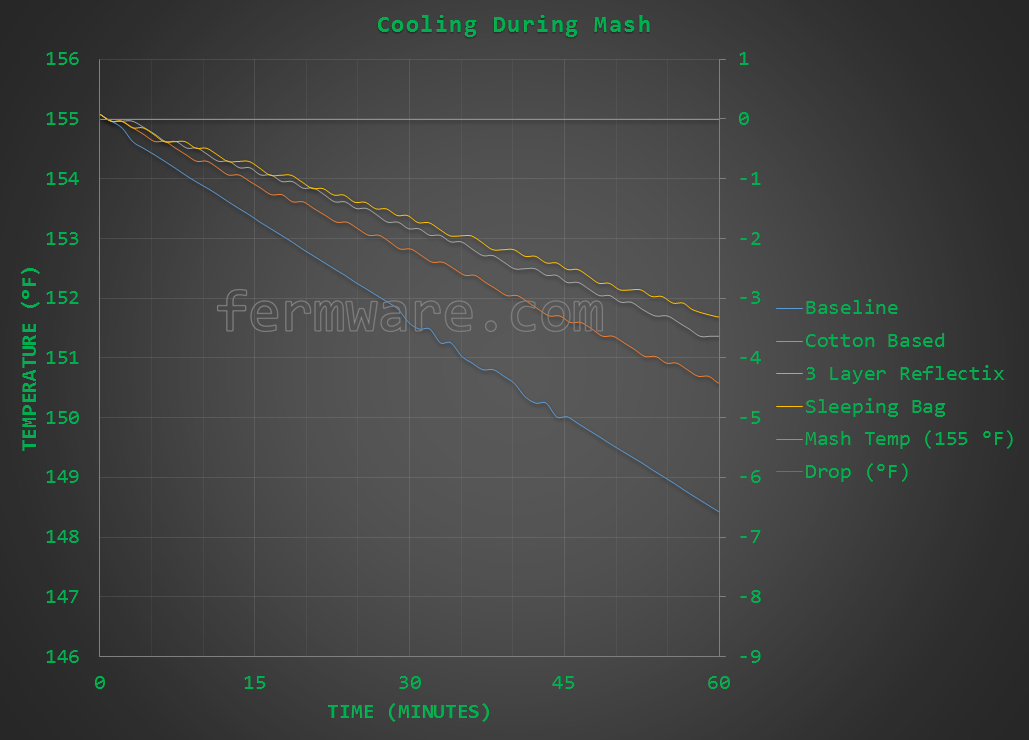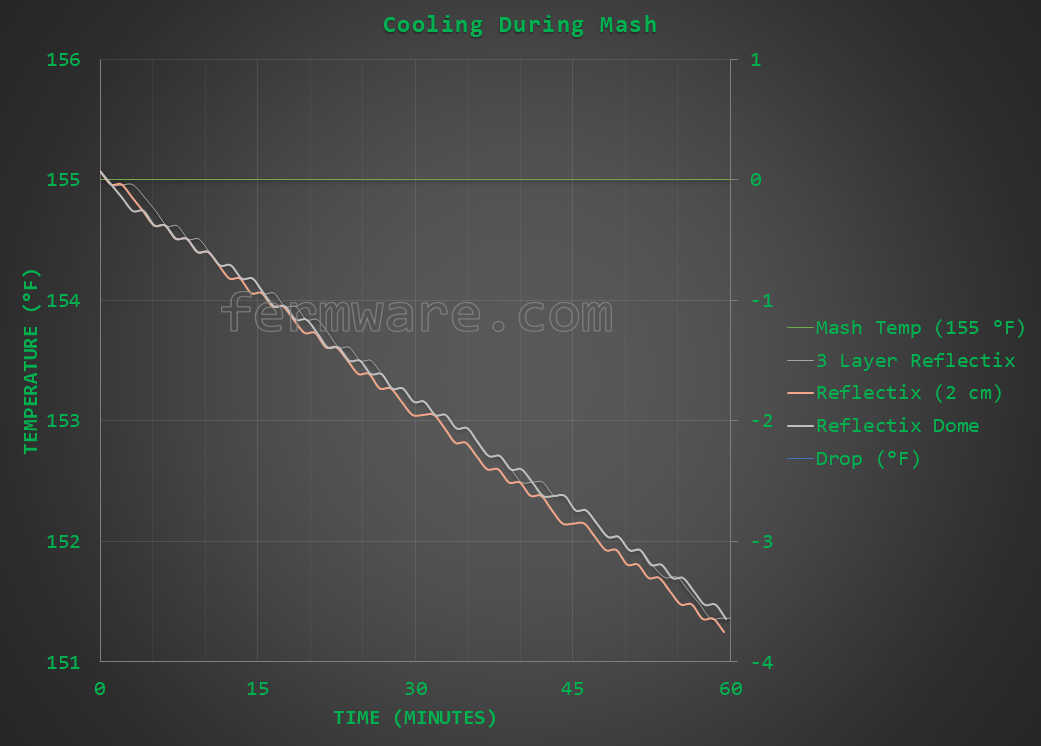applescrap
Be the ball!
I just picked up a new Brewer's Edge Mash & Boil (No, I haven't actually brewed with it yet), but since I knew I'd need some form of insulation, I experimented with a few different kinds of insulation. Even though I used the Brewer's Edge as the test bed, the results should apply to any mash tun / electric kettle.
The quick and dirty results are the following from best to worst, out of the methods I tried:
1. Stock
2. Cotton based water heater insulation
3. 3 layers of Reflectix
4. Sleeping bag
Yes, the least high tech, ended up being the best.
Here is a graph of temps through a simulated mash range (water only).

If you want the full run down and more graphs and info, check out the post:
http://fermware.com/mash-tun-insulation-comparisons/
Hah, cool. I enjoyed this very much. I really appreciate the actual data. I've had discussions on this before and do enjoy them but I think this is the first time I've actually seen data. I saw a picture once of a guy who used a big old winter coat. Well I happen to have an old huge double extra large down jacket. And it keeps I think about three degrees as you found with sleeping bag. 155 to 152. Test after test showing it doesn't matter I'm dwindling in caring. Ultimately using a cooler and a boil vessel seem like a good idea if you really want better control and or recirculation. Lined cardboard box over sleeping bag? plastic Bag over sleeping bag?










































![Craft A Brew - Safale BE-256 Yeast - Fermentis - Belgian Ale Dry Yeast - For Belgian & Strong Ales - Ingredients for Home Brewing - Beer Making Supplies - [3 Pack]](https://m.media-amazon.com/images/I/51bcKEwQmWL._SL500_.jpg)





